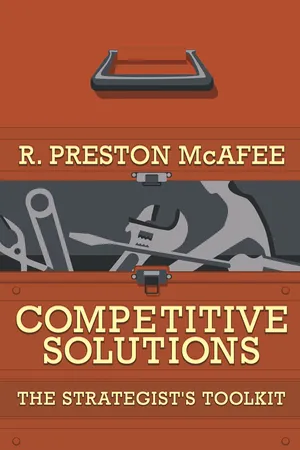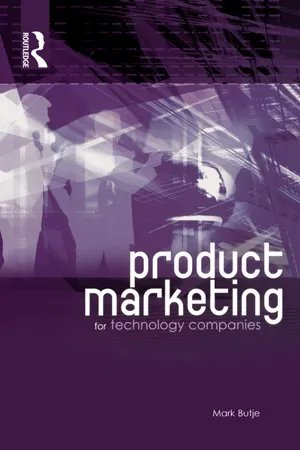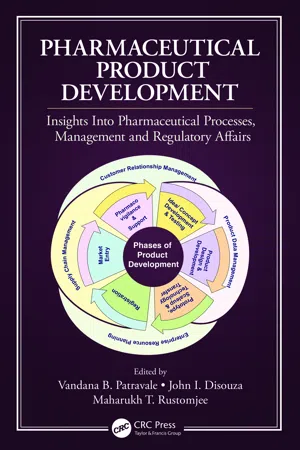Marketing
Product Life Cycle
The product life cycle refers to the stages a product goes through from introduction to decline. These stages typically include introduction, growth, maturity, and decline. Understanding the product life cycle helps businesses make informed decisions about marketing strategies, pricing, and product development to maximize the product's potential in the market.
Written by Perlego with AI-assistance
Related key terms
1 of 5
10 Key excerpts on "Product Life Cycle"
- eBook - ePub
- Kenneth Kahn(Author)
- 2014(Publication Date)
- Routledge(Publisher)
11 Life Cycle Management After launch, the product begins what is termed “the Product Life Cycle.” The product development team is discharged at this point, if it has not already been discharged prior to launch, and a product management team (which in many cases had launch responsibility) takes over responsibility for the product. The product management team will focus on the life cycle management of the product—that is, ensuring that the product reaches its full potential as a particular product item or emerging product line in the company’s product mix. Associated with reaching this potential are decisions about fine-tuning the product’s marketing strategy, defending against competitors, and continuous innovation of the product, if feasible. Brand management considerations also will persist after product launch. The Product Life Cycle The Product Life Cycle is a concept that attempts to describe a product’s unit sales postlaunch through its eventual termination. The curve parallels the diffusion or S-curve, suggesting product diffusion into the marketplace. The theory underlying the Product Life Cycle is that unit sales will transition through four distinct Product Life Cycle stages: introduction, growth, maturity, and decline (see Exhibit 11.1). The introduction stage represents the launch cycle. Here sales slowly emerge as the company tries to establish a beachhead and then early growth. The focus of the marketing effort is to create awareness and get trial. During the growth stage, sales rise steadily, and the focus becomes to maximize market share. The maturity stage represents a leveling of sales, and the focus is profit maximizing and market share maintenance. The decline stage is the final stage characteristic of decreasing unit sales - eBook - ePub
Competitive Solutions
The Strategist's Toolkit
- R. Preston McAfee(Author)
- 2009(Publication Date)
- Princeton University Press(Publisher)
5Product Life Cycle
To better understand differentiation, it is useful to examine product competition from a market perspective, in what is known as the Product Life Cycle. This traces a product from its inception through mass production to its replacement by other products. Substantial differentiation usually arises twice during the Product Life Cycle. First, products are often improved substantially during their initial evolution, and such improvements are introduced through new variants of the product. In this case, differentiation is primarily vertical, via increases in quality. Second, a mature product may be tailored to specialized customer groups, producing a set of standard variants to the successful basic design.Historically, the Product Life Cycle theory focused on the emergence of a dominant design. In this view, many firms initially competed with their own designs for a new product, and the research efforts of the firms were devoted to improving the product design. Competitors copied innovations and improvements, and the product design converged on a best product. As a “best” design emerged, the firms most capable of producing the best design, not necessarily the first developers of the best design, grew as a proportion of the market. A shakeout occurred as these firms grew, and the number of producers diminished significantly. After this time, the market size stabilized. A major problem with this description is that many products never have a dominant design, because consumer preferences support a variety of designs. Recent research has enhanced our understanding of the Product Life Cycle, although there is much more to know.A large number of familiar products appear to have fit the Product Life Cycle framework. Several of these are illustrated in figure 5.1 .1 Most of these products have periods during which the growth rate increases, followed by slowing growth. Color television (fig. 5.2 - eBook - PDF
Factories of the Future
Technological Advancements in the Manufacturing Industry
- Chandan Deep Singh, Harleen Kaur(Authors)
- 2023(Publication Date)
- Wiley-Scrivener(Publisher)
In the current scenario, four stages of the old biological product lifecycle have been overcome by introducing the engineering field in product lifecycle management. This redefined Product Life Cycle management starts with concept generation. It passes through product design, raw material procurement, manufacturing, transportation, sales, utilization, and after-sales service and ends up with recycling/disposal of the product. 10.2.2 Biological Product Lifecycle Stages The Product Life Cycle is the journey of a product that starts from mar- ket acceptance and ends at elimination. The product lifecycle can be sub- divided into four stages which have been discussed below: Introduction Stage: The introduction stage begins with launch- ing a product in the market to maximize the sale. This stage is termed as the “money sinkhole” stage as in this stage, organizations incur huge 232 Factories of the Future expenditures on advertising and promotion, and sales are lazy. The organi- zations also establish distribution channel that helps to spread the product on every counter of the market. Another most crucial factor under this stage is pricing. Product pric- ing requires structured strategies according to the product; for instance, if the company is launching a different and unique product, the customer is ready to pay a high price, or an organization can follow pre-set price strat- egy for sale maximization. However, this requires sound knowledge of the market and customers’ requirements. The market mix also plays a crucial role in determining the target audience before launching the product in the introduction stage. Growth Stage: This stage shows a rapid increase in sales because early adopters and untargeted potential buyers start purchasing the product. During this phase, new competitors also enter the market, and as a result, they introduce new products with additional features. - eBook - ePub
- Marilyn Stone, Marilyn A Stone(Authors)
- 2007(Publication Date)
- Routledge(Publisher)
All products and services have a distinct life span that is measured by the chronological history of sales from the launch of the product until its withdrawal from the market. This section explains each stage of the Product Life Cycle (PLC) and the marketing activities that accompany each stage.After completing this section, you should be able to:- discuss the characteristics of the PLC;
- recommend marketing activities that are appropriate for each stage;
- evaluate the usefulness of the PLC as a marketing tool;
- modify the PLC to improve its effectiveness;
- use the PLC to assist in case study analysis.
PLC
After a product is launched there will be times when its sales levels will grow, times when they will be relatively static and other times when sales will decline, particularly if it is superseded by a new product that satisfies consumer needs better. Consider, for example, consumer preference for CD over vinyl records and the disappearance of launderettes in town centres following the introduction of domestic washing machines. The PLC is a model that helps describe the common levels of sales growth and decline that can be observed over the lifetime of a product (see Figure 8.2) .The model helps marketers determine the level of support that is required to secure the present and future success of the product. Figure 8.2 indicates that there are four main stages in the PLC: introduction, growth, maturity and decline. These are each discussed in greater detail along with their implications for marketing strategy.Characteristics of the PLC
The PLC illustrates the four key stages that a product is likely to experience between its launch and disappearance from the market. These stages are discussed below.INTRODUCTION
When a product enters the market, sales will begin slowly and profit, if any, will be small owing to the lead time required for marketing efforts to take effect. As the product is new and untested, potential customers may be unwilling or reluctant to buy it. Another reason for low profitability is that the firm is unlikely to be making full use of its production capacity and will be unable to enjoy the economies of scale that are associated with higher levels of output. Low profitability is also a result of the need to recoup development and launch costs. - eBook - PDF
Introductory Entrepreneurship N4 SB
TVET FIRST
- A Janse van Rensburg(Author)
- 2017(Publication Date)
- Macmillan(Publisher)
It might show no profits at this stage and the costs per customer are high. • Growth phase. The market is now aware of the product. Some customers have adopted it. Other buyers will follow. Profits rise. • Mature phase. Sales will increase until the product reaches a peak when it starts to move to the decline stage. Profits are high. • Decline phase. Sales and profits decline. Figure 5.12: The Product Life Cycle Activity 5.11 (class/group) Go to http://www.slideshare.net/7837686478/product-life-cycle-12605019?next_ slideshow=2 and watch a slide show on the Product Life Cycle. In the workplace: What should entrepreneurs do to make the most of their products’ life cycles? During the introduction phase, they should concentrate on advertising and keep their prices low to capture the market. During the growth phase, they can gradually increase their prices. However, they will have to defend their market share in the mature phase. As their products enter the decline phase, they should try to think of new ideas to give their products new images. Activity 5.12 (individual) 1. Briefly describe the three subdivisions of consumer goods. Include an example of each. 2. Name three ways in which entrepreneurs can reduce risk when they introduce a new product. 3. Name the four phases of the Product Life Cycle and give a brief description of each. 4. Give two examples of tangible products. 5. Give two examples of intangible products. 6. You opened a bakery in your area. You concentrated on selling various kinds of bread and muffins. You realise that your product is in the mature phase and that you need to do something before it reaches the decline phase. What can you do? 81 Packaging products Packaging is the wrapping that surrounds products. It protects and helps to market products because it identifies, describes, displays and promotes them. However, entrepreneurs need to think about a number of things before they decide on the type of packaging to use for their products. - David F. Midgley(Author)
- 2014(Publication Date)
- Routledge(Publisher)
2. As this stable level is primarily determined by consumer perceptions of the product’s performance it is probable that the manufacturer will be unable to alter this level significantly, in the short term, by application of the marketing tools at his command. In short the system has considerable inertia.3. Eventually a newer product will meet consumer needs in the area more satisfactorily, or the needs themselves will alter, and sales will decline.The Product Life Cycle concept is therefore useful in that it suggests that existing products should be continuously monitored – to detect those about to decline – and in that it indicates the broad parameters of a new product launch, and thus allows more realistic projections to be made. However in order to turn these ideas into workable strategies, it is necessary to examine the relation between the life cycle and corporate profits. Again this is a reasonably simple relationship. While a new product is undergoing development, costs are incurred without any compensating revenue. These costs usually increase the closer to product launch we get, because of tooling up, building inventory, etc. In the early stages of the launch costs still outrun revenue until an adequate sales level is reached and the new product begins to pay for itself.8 Later sales and profits decline. Diagrammatically the profit/loss curve can be typically represented as in Figure 6.9 .Fig. 6.9: Profits over the Life CycleIt is hoped that area ? is greater than area A since this implies a positive return on investment. Effectively area A is the investment and area ? the return on this investment, if both are discounted to present values at (t=0) then the rate of return may be computed. How great a return will be accrued obviously depends on a great many factors, but primarily on meeting the particular consumer need in a better fashion than any existing product – in other words, on securing a large share of the particular market. It would appear that possibly the best strategy for achieving this is to be the first to produce this improved product, that is to ‘pioneer’ as King (1973) terms it.Note that here we are discussing the best possible strategy for the greater return on investment. It is perfectly possible to be second, third, fourth or even fifth onto the market with the improved product and still have a successful launch and a positive return on investment. However as Buzzell, Gale and Sultan (1975) have found in a study of fifty seven major American companies, the bigger the market share the bigger the return on investment. This is demonstrated in Table 6.1- eBook - PDF
Visualizing Marketing
From Abstract to Intuitive
- S. Umit Kucuk(Author)
- 2016(Publication Date)
- Palgrave Macmillan(Publisher)
Every product or service is first invented and intro- duced to the market (the introduction). If the product is successful, it grows by generating sales for the company (growth) and then reaches maturity (maturity). When the sales and especially profit generated by the product start to fall, the product ends its life (decline). The pro- duct’s life is highly dependent on making the right marketing decisions at every stage of its life, as illustrated by the red lines in Fig. 3.4. The product’s life will eventually be determined by its ability to generate more sales and hence profit, which is also related to the diffusion model described above. Companies need to focus on innovators and early adopters when first launching new products on the market. Most sales eventually come from the early majority and late majority in the growth and maturity stages as indicated in Fig. 3.4. In decline, the focus is on laggards. Product diffusion models based on consumer risk-taking and adoption behaviors provide marketers with a market segmentation approach through the PLC. During the introduction stage, profit is negative because of the high investment costs for innovation and development (see Fig. 3.1). At this stage, however, the most important strategic marketing focus should be creating consumer awareness. Once the product starts to maximize sales capacity by reaching the early majority, it crosses the chasm to achieve growth level and the profit starts to soar. This is the stage where every product wants to stay as long as possible. Such growth will eventually attract competitors. There will always be newcomers in the product mar- ket, which can become dominated by fierce competition. At the growth 3 PRODUCT 17 stage, therefore, the company marketing strategy should focus on pro- duct differentiation. - eBook - ePub
- Mark Butje(Author)
- 2012(Publication Date)
- Routledge(Publisher)
C H A P T E R 3 The Product Life Cycle Process From idea to Deployment and Back Objectives In this chapter, we will have a closer look at the Product Life Cycle process, zooming in to the different stages. Each stage can be seen and is described as a sub-process. This approach to the Product Life Cycle process will provide you with a structured way of working, checklists and examples. The subjects in this chapter are: How to assess an idea for the development of a new product? Why the rest of the company should be involved at an early stage? Why the product design needs to start with the development of a product strategy? The process for strategy development. How to develop your functional specifications from a user’s perspective? How to create a product plan? Tips on how to get the approval of the management team for the development of the product. A closer look at the development process: It is not just a matter for the engineering department alone. How to control the performance of your product during the deployment stage? How and when to make improvements to your product to extend its life? Now that we have described the ideal product manager, one who acts as a spider in the web, dealing with the heroes of technology, the soldiers of sales and the watchdogs of finance, you may be disappointed to hear that they are nothing more than a mere mortal. Everyone makes mistakes. This chapter provides product managers with practical tools and tips including checklists and examples to help make life easier. The methodology given in this book will closely follow the Product Life Cycle process (Figure 1.2). Figure 3.1 is that same Product Life Cycle process drawn again, but this time with one extra stage (or sub-process): the processing of an idea for a new product. Many ideas are born in technology companies, but no more than 15 percent of all ideas will make it into development - eBook - PDF
Pharmaceutical Product Development
Insights Into Pharmaceutical Processes, Management and Regulatory Affairs
- Vandana B. Patravale, John I. Disouza, Maharukh Rustomjee, Vandana B. Patravale, John I. Disouza, Maharukh Rustomjee(Authors)
- 2016(Publication Date)
- CRC Press(Publisher)
11 Product Life Cycle Management so on. This is a preferred tool for making simple business decisions and is expressed as the time taken to reach the breakeven point and profitability thereafter. For this, the cost and stages of investment for the project are determined along with a probable return timeline. This is then compared against the identified benefits, and project prof-itability is calculated. Based on this, the project selection is accomplished. 1.4.3 C ONCEPT D EVELOPMENT Once a single product idea is selected through the process described in idea genera-tion and idea screening, a product concept has to be developed for the said idea and tested so that a complete product can emerge in later levels of the NPD road map. This can be visualised as an advanced step of pharmaceutical strategy development wherein a pharmaceutical product and probable method of manufacturing is pro-posed in compliance with a quality target profile. Typically, the process involves multiple steps as described in Figure 1.7. The figure also describes the relevance of each step in pharmaceutical product development. - No longer available |Learn more
- (Author)
- 2014(Publication Date)
- College Publishing House(Publisher)
____________________ WORLD TECHNOLOGIES ____________________ Product Life Cycle Management A generic lifecycle of products In industry, product lifecycle management ( PLM ) is the process of managing the entire lifecycle of a product from its conception, through design and manufacture, to service and disposal. PLM integrates people, data, processes and business systems and provides a product information backbone for companies and their extended enterprise. 'Product lifecycle management' (PLM) should be distinguished from 'Product Life Cycle management (marketing)' (PLCM). PLM describes the engineering aspect of a product, from managing descriptions and properties of a product through its development and useful life; whereas, PLCM refers to the commercial management of life of a product in the business market with respect to costs and sales measures. Product lifecycle management is one of the four cornerstones of a corporation's information technology structure. All companies need to manage communications and information with their customers (CRM-Customer Relationship Management), their suppliers (SCM-Supply Chain Management), their resources within the enterprise (ERP- ____________________ WORLD TECHNOLOGIES ____________________ Enterprise Resource Planning) and their planning (SDLC-Systems Development Life Cycle). In addition, manufacturing engineering companies must also develop, describe, manage and communicate information about their products. A form of PLM called people-centric PLM. While traditional PLM tools have been deployed only on release or during the release phase, people-centric PLM targets the design phase.
Index pages curate the most relevant extracts from our library of academic textbooks. They’ve been created using an in-house natural language model (NLM), each adding context and meaning to key research topics.









